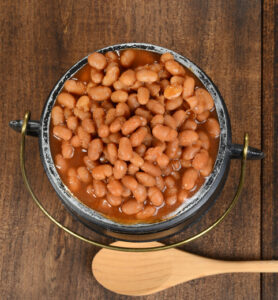Stay regular with physical activity and nutrition
When it comes to maintaining a healthy gut, exercise and diet go hand in hand!
Diet and physical activity work together to promote good bowel health, which can help prevent bloating and constipation.1 Let’s look at what causes constipation and how we can modify our diet and exercise patterns to help manage it.
What causes constipation?
Constipation involves difficulty passing, or not being able to pass bowel motions.1 When we become constipated, we may be passing less frequent bowel motions compared to what is normal, we may be straining to pass movements or we may become bloated or experience abdominal cramps.1 Constipation is commonly caused by not enough fibre in the diet, not drinking enough water, lack of physical activity, stress or a change in daily routine.1 If you notice a drastic change in your bowel habits and are not sure why, book an appointment with your local doctor.
How physical activity can help with constipation
If we’re not active regularly, our stools can remain in our large intestine for longer periods of time. The longer they spend in our intestine, the harder they become, as more and more water is drawn from them. Exercise can help naturally stimulate our large intestine and help us pass bowel motions.1 Physical activity like walking, cycling, swimming, skipping or even yoga can all help relieve constipation. If stress is a cause of constipation, regular physical activity can also help lower stress levels and reduce the frequency or severity of constipation.
Diet and constipation
When it comes to diet and constipation, fibre and water are the two main nutrients to consider. Fibre is not digested by our bodies and makes its way to our large intestine where it helps to bulk up our stools and make them easier to pass.2 Wholegrains (like oats, wholemeal bread or wholemeal pasta), legumes, fruits and vegetables are all great sources of fibre that we should be including in our diets every day.3 Try our homestyle baked beans for a fibre rich meal.
It’s also important to supplement all that fibre intake with enough water. If our stool becomes too bulky with not enough hydration, it can make it harder to pass. Aim for about 8 glasses of water a day!
Homestyle Baked Beans
Serves 4

Ingredients:
- Olive or canola oil spray
- 1 medium brown onion, diced
- 2 cloves garlic, crushed
- 1 tbsp no added salt tomato paste
- 1 tsp smoked paprika
- 1 x 400g tin no-added salt diced tomatoes
- 1 tbsp salt-reduced tomato sauce
- 1 tbsp Worcestershire sauce
- 1 x 400g tin cannellini or butter beans, drained and rinsed
- 3 tbsp parsley, finely chopped
- 4 slices wholegrain bread, toasted
- Pepper to taste
Method:
- Spray oil in a medium saucepan and cook onion and garlic over medium heat until softened.
- Add the tomato paste and smoked paprika. Stir through and cook for 1 minute.
- Add the tin of tomatoes, tomato sauce and Worcestershire sauce. Mix well and bring to the boil.
- Reduce the heat and simmer uncovered for 10 minutes or until slightly thickened.
- Add in the cannellini beans and stir until heated through.
- Remove from heat, mix in the parsley and pepper and serve on toast.
- To up the fibre content of this meal, serve alongside some oven roasted vegetables.
References
- The Better Health Channel. Constipation [Internet]. Department of Health, State Government of Victoria, Australia © Copyright State of Victoria 2020. Updated 2014 Aug 31 [cited 2022 Jun 15]. Available from: https://www.betterhealth.vic.gov.au/health/conditionsandtreatments/constipation
- Nutrient Reference Values for Australia and New Zealand. Dietary Fibre [Internet]. Ministry of Health. Updated 2019 May 9 [cited 2022 Jun 15]. Available from: https://www.nrv.gov.au/nutrients/dietary-fibre
- National Health and Medical Research Council (2013) Australian Dietary Guidelines Summary. Canberra: National Health and Medical Research Council. Available from: https://www.health.gov.au/resources/publications/the-australian-dietary-guidelines
Last updated: November 29, 2023 at: 1:04 pm
